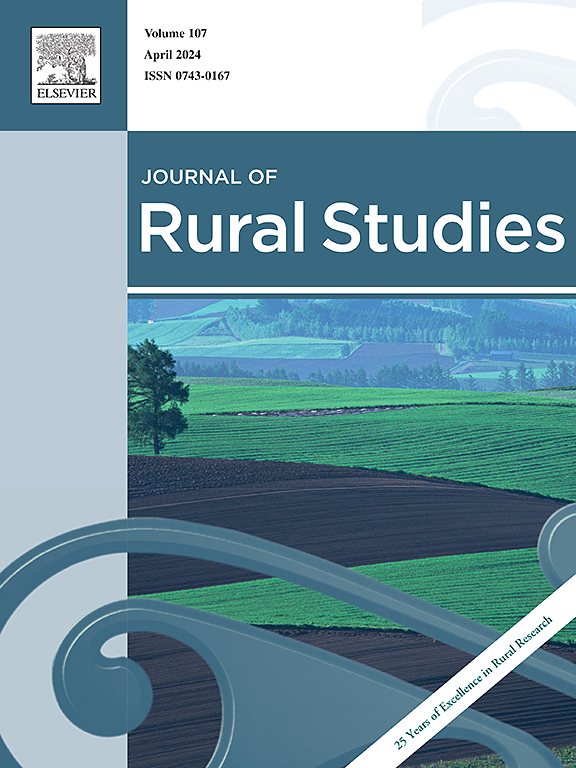农业相对回报对耕地撂荒的影响,就是无所得无所得
IF 5.1
1区 社会学
Q1 GEOGRAPHY
引用次数: 0
摘要
撂荒对粮食安全和农业可持续发展具有深远影响。然而,虽然人们普遍认为低农业比较回报(ACR)是撂荒的主要原因,但这种影响的程度及其潜在机制尚未得到很好的理解。在构建数学模型和分析框架的基础上,采用面板高维固定效应模型研究ACR对耕地撂撂率的影响。利用中国家庭数据库2015-2021年的大型农户面板数据,我们发现ACR对撂撂地面积占总耕地面积的比例有正影响,平均系数为0.016。这主要是通过减少长期土地投入、农业资本投入和农业劳动力投入来实现的。然而,农村要素市场和政府农业补贴的影响也会对其产生调节作用。特别是农机市场、土地租赁市场和农业补贴水平可以减弱ACR对土地利用的负面影响。研究结果还表明,在东北和中部以及主产区,ACR对农户的危害不大,但对其他农户的危害较大。总体而言,本研究有助于更好地理解中国农村ACR与撂撂率之间的定量关系,并为其他发展中国家在低ACR情况下制定有针对性的耕地撂撂率控制措施提供有价值的见解。本文章由计算机程序翻译,如有差异,请以英文原文为准。
Of nothing comes nothing: the impact of agricultural comparative return on cropland abandonment
Cropland abandonment exerts far-reaching consequences for food security and sustainable agricultural development. However, while it is generally believed that low agricultural comparative return (ACR) is the main cause of cropland abandonment, the magnitude of such effects and their underlying mechanisms are not well understood. On the basis of constructing a mathematical model and analysis framework, we adopt a panel high-dimensional fixed-effects model to investigate the impact of ACR on cropland abandonment. Employing a large-scale farm-level panel data from Chinese Family Databases during 2015–2021, we find that ACR has a positive impact on the proportion of abandoned cropland area to total cropland area, with an average coefficient of 0.016. This effect is mainly achieved through reductions in long-term land investment, agricultural capital input, and agricultural labor input. Nevertheless, it is also moderated by the effects of rural factor markets and government agricultural subsidies. In particular, the agricultural machinery market, the land rental market and the level of agricultural subsidies can weaken ACR's negative impact on land use. Our findings also reveal that ACR is not harmful to households in northeastern and central China or major grain producing areas, while it harms others. Overall, this study provides a better understanding of the quantitative relationship between ACR and cropland abandonment in rural China, and valuable insights for other developing countries in formulating targeted measures to curb cropland abandonment in low ACR situations.
求助全文
通过发布文献求助,成功后即可免费获取论文全文。
去求助
来源期刊

Journal of Rural Studies
Multiple-
CiteScore
9.80
自引率
9.80%
发文量
286
期刊介绍:
The Journal of Rural Studies publishes research articles relating to such rural issues as society, demography, housing, employment, transport, services, land-use, recreation, agriculture and conservation. The focus is on those areas encompassing extensive land-use, with small-scale and diffuse settlement patterns and communities linked into the surrounding landscape and milieux. Particular emphasis will be given to aspects of planning policy and management. The journal is international and interdisciplinary in scope and content.
 求助内容:
求助内容: 应助结果提醒方式:
应助结果提醒方式:


